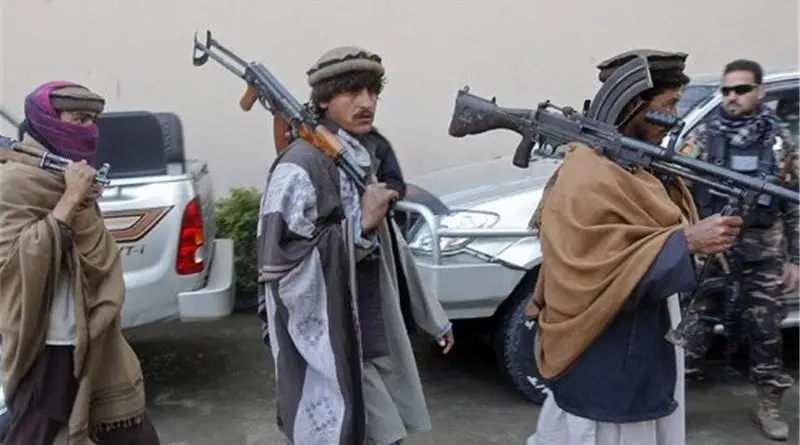Tracing The Footprints Of TTP And BLA’s Joint Operations – OpEd
By Dr. Sahibzada Muhammad Usman
The landscape of terrorism and insurgency in South Asia, particularly in Pakistan, has been significantly shaped by the activities of two militant organizations: Tehrik-i-Taliban Pakistan (TTP) and the Baluchistan Liberation Army (BLA). While the TTP has its roots in the tribal areas of Pakistan and primarily targets the Pakistani state for its alliance with the West, the BLA operates in the Baluchistan province, focusing on autonomy or independence from Pakistan. Despite their distinct origins and objectives, there have been indications of joint operations between these two groups, which have profound implications for the region’s security dynamics.
Tehrik-i-Taliban Pakistan (TTP) emerged in 2007 as a coalition of various Islamist militant groups operating in the Federally Administered Tribal Areas (FATA) along the Afghan border. The TTP’s foundation was a response to the Pakistani military’s operations against insurgent groups in the area, motivated by Pakistan’s participation in the US-led War on Terror. The TTP’s objectives have been the imposition of a stricter interpretation of Sharia law in Pakistan, opposition to the Pakistani state’s cooperation with the West, and the release of their fighters from Pakistani prisons.
The Baluchistan Liberation Army (BLA), designated as a terrorist organization by Pakistan and other countries, has been active since the early 2000s. The BLA’s campaign is rooted in a long-standing grievance against the Pakistani government over the perceived exploitation and marginalization of the Baluchistan province. The BLA’s primary aim is achieving greater autonomy or independence for Baluchistan, leveraging guerrilla warfare tactics against state interests, including security forces and infrastructure projects.
The notion of joint operations between the TTP and BLA seems incongruous at first glance, given their differing goals and operational theaters. However, strategic alliances in the realm of insurgency and terrorism are not uncommon, especially when such collaborations can bolster the capabilities and impact of the involved parties. Reports and incidents in recent years suggest that these two groups have occasionally coordinated their efforts against common adversaries, namely the Pakistani security forces. The convergence of TTP and BLA operations can be traced back to a shared adversary in the Pakistani state, which both groups accuse of oppression and betrayal of their respective causes. This enemy-of-my-enemy principle has fostered an environment where tactical collaborations are deemed beneficial. Joint operations have reportedly included coordinated attacks on security installations, sharing of intelligence and logistics, and even joint training camps in the lawless areas of Baluchistan and the tribal regions.
The collaboration between the TTP and BLA poses significant challenges for the Pakistani security apparatus and has broader implications for regional stability. Firstly, it complicates the counter-insurgency strategies of the Pakistani military and law enforcement, as they must contend with a hybrid threat that can strike in multiple provinces and across diverse terrains. Secondly, the alliance between these groups can potentially attract other insurgent factions, creating a larger, more coordinated insurgency movement within Pakistan. Furthermore, the joint operations of TTP and BLA have international ramifications, particularly concerning Afghanistan. The Afghan Taliban’s resurgence and subsequent takeover of Afghanistan in August 2021 have emboldened groups like the TTP, providing them with a morale boost and possibly safe havens.
Countering the alliance between the TTP and BLA requires a multifaceted strategy that goes beyond military operations. Pakistan’s approach includes enhancing intelligence-sharing mechanisms, conducting targeted operations against militant hideouts, and securing vulnerable borders, especially with Afghanistan. Additionally, addressing the root causes of insurgency through economic development, political dialogue, and addressing grievances can undermine the support base of these groups.
The future trajectory of TTP and BLA joint operations remains uncertain, influenced by domestic, regional, and international dynamics. The potential for these groups to sustain their collaboration will depend on various factors, including the effectiveness of Pakistani counter-terrorism efforts, the political situation in Afghanistan, and the international community’s stance on terrorism and insurgency in the region.
The collaboration between Tehrik-i-Taliban Pakistan and the Baluchistan Liberation Army represents a significant and complex challenge to security and stability in South Asia. While their alliance may be driven by tactical considerations and a common adversary, it underscores the fluid and evolving nature of insurgent networks in the region. Understanding the dynamics of this collaboration is crucial for formulating effective counter-terrorism strategies that address not only the immediate threat but also the underlying issues fueling insurgency and terrorism in Pakistan and beyond.

